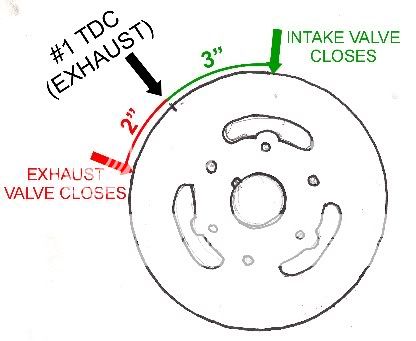Hello! I am in some desperate need of a few questions answered. Hoping someone out there can help.
Me and my dad just did an engine swap. The Slant in my '73 Valiant started knocking so we pulled it and threw in a Slant from a '72 Satellite. The '72 Slant has new rings, bearings, timing chain/gears installed. Almost everything from my '73 engine was transferred over to the '72 (manifold setup/carb, oil pan, oil pump, fuel pump, coil and distributor).
So, we finally get the engine in and go to start it up and nothing. Won't start. Okay. Fine. Pull the distributor and go to the next tooth. IT STARTS UP!! But wait... it's running rough... can't get it in time. Something isn't right. Try the next tooth on the distributor... NOTHING. Won't start. Okay, so we've found a magic tooth on the distributor that actually gets it to start, but why's it running like crap? Why can't we get it to smooth out and set the timing to spec?
NOW FEAR SETS IN. Did we goof up on the timing chain and gears? Are we off a tooth?
And this is where I'm hoping someone can answer some questions. Is there any way I can do a test to see if crank and cam aren't timed properly? Is there any way I can observe the behavior of the valves in relation to the pistons to see if I'm off a tooth? I'm really hoping I can figure out a way to diagnose this situation without pulling everything apart again.
A COUPLE NOTES:
A) I am relatively certain that the TDC mark on my damper is correct. I am going to find TDC again and confirm it, but I'm pretty sure this isn't a problem, so there shouldn't be any issue using it for reference.
B) When my dad was adjusting the valves before we put the engine in, he felt like he had to tighten the rockers a lot more than usual to get them to spec. He was using the coat-hanger method for getting the pistons to the top and then adjusting the valves. I specifically remember he felt like something was off about the whole thing but we ended up shrugging it off. Was this a mistake? Could this have been evidence that our timing chain/gears is off???
We aligned the dots on the gears almost perfectly. I don't see how they could be off, but I'm really starting to fear they might have been. If anyone could please offer suggestions I would appreciate it very much. This car is my daily driver! I'm effed without it.
THANKS!!
-Matt
|

